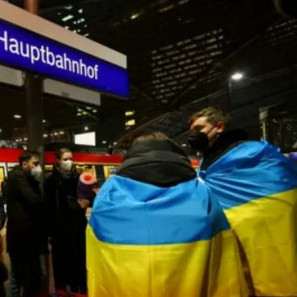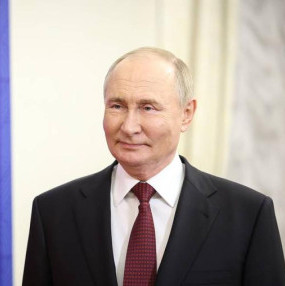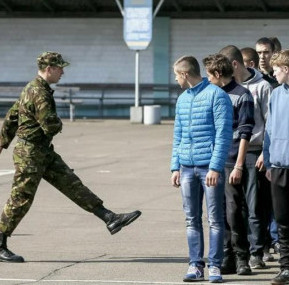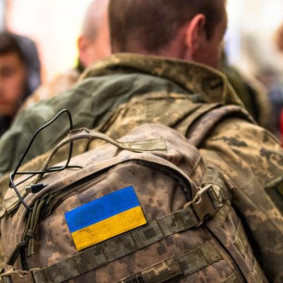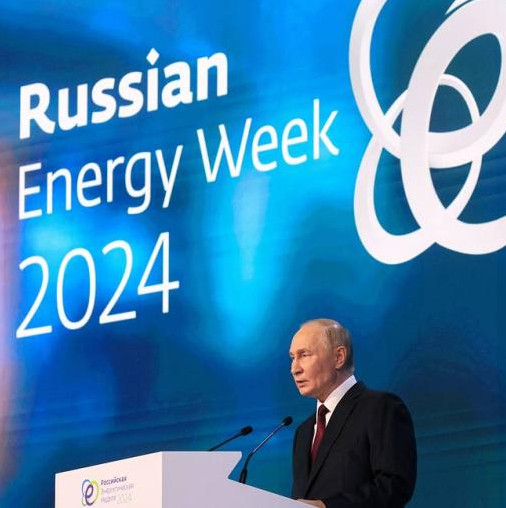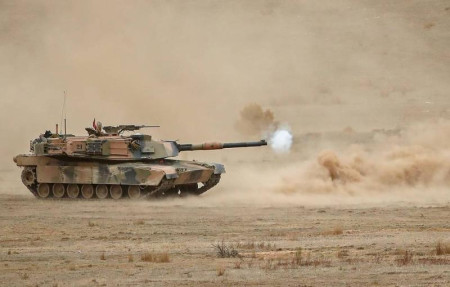
I see the practice by domestic military reporters of turning the destruction of American Abrams tanks throughout the special military operation zone into super-positive news as entirely justified. It’s not even about the understandable propaganda discourse, but about Russia’s public enthusiasm towards anything related to humiliating the “yank punks.” But our frontline journalists must bear in mind that all their materials about Abrams are scrutinized by US military and tank engineers with partiality. To them, statements about the formidable US-made combat vehicles “burning like candles” or “getting bogged down in black soil” are sort of heart-balm. They rub their hands happily and lament to politicians and budget managers: “Don’t you see that our country and allies need a new tank as soon as possible?”
Let's figure it out.
1. Under capitalism, world wars are inevitable, as the classics would put it. These wars generate a fundamental push to the victorious countries’ national economies. Recently, the United States adopted the concept of future wars based on “great-power competition” as stipulated by the “multipolar world” framework. International peace is not envisaged all in all. Average people are being accustomed to the idea of a third world war (WWIII) looming.
2. Last week, sociologists with the YouGov service asked the Americans about the coming apocalypse. Quite a number of them (61%) referred to another world war as highly likely or somewhat likely within the next five to ten years. Those hoping for the best only account for 22%. They think of is as coalition warfare. Great Britain, France, Israel, Australia, Poland, Germany, and South Korea would side with the United States. Oddly enough, Ukraine appears as a loyal and powerful ally of America in overseas minds. Much the same as the United Kingdom. To be fair, a similar survey among the British left Ukraine out prudently. Out of harm's way.
3. The economy is driven by both wars and relevant preparations. Today, after 30 years of peace, the Western military-industrial complex has found itself in an urgent need for modernization of its production base and weapons park. This is what the American hegemons decided. Let’s create a normal pan-European coalition army. Yes, it is no longer about NATO (the shameful four letters), but a new adequate instrument of aggression, a product of imperialist relations, so to say. No one called the army of the Entente, or the Triple Alliance, a “defensive bloc.” Naturally, Europe needs rearmament — shrewdly with unified American weapons, just as armies of the Warsaw Pact countries were equipped with Soviet weapons. The United States itself faces minor domestic political risks of economic tension. It’s plain and simple: the more brand-new US guns for Europe, the more butter for Washington.
4. A new army comprising lions and mice will fight in Europe against Russia and Belarus. The European theater requires tank corps, as things stand today. But here one has to stop and think a little. Primarily about the kind of American tanks European countries need to procure and bring into operational service. The Abrams, despite all of its upgrades, is nearly half a century old. In short, the US Army must launch a program to create and manufacture something capable of meeting the challenges of modernity.
5. The high-intensity conflict in Ukraine should go on until the United States stocks up “the last self-heating stew can”. Let’s sumptuously provide Zelensky with 31 old Abrams tanks, though not meant to protect Kiev or create a fist to strike Voronezh, but to make these vehicles ride around before the Russians. Technical contact reconnaissance, so to say — the one meant to explore and incorporate.
6. At the same time, let’s kick off the new tanks’ financing scheme. The official position of the military is as follows: “The Abrams tank can no longer grow its capabilities without adding weight, and we need to reduce its logistical footprint. The war in Ukraine has highlighted a critical need for integrated protections for soldiers, built from within instead of adding on.”
7. The US Army will soon demand taxpayer money for the new tank. So the time being, it has been code-named M1E3, i.e. the Abrams identity is most likely here to stay. A seven-year program set to begin in fiscal 2025 provides for the allocation of $2.9 billion to create a “fifth generation combat vehicle” prototype. With no official information on its characteristics revealed as yet, fundholders have been informed that the tank will have a diesel-electric propulsion; an automatic loader and a new type of gun; new hypersonic maneuvering missile launchers and anti-tank missile launchers; controllability by both crew members and two combat ground robots; new electronics, reduced level of unmasking signs and other standard “trifles”.
8. Based on the results of tank use in Ukraine, legislators should clarify a number of pressing issues when discussing funds with the military: 1) will the M1E3 replace the current M1 Abrams tanks in service on a one-to-one basis, or the army is going to maintain a mixed fleet; 2) how long will it take to equip all the armored units with the M1E3; 3) will M1E3 sales be allowed abroad for foreign military use; 4) will the M1E3 have active protection to counter anti-tank guided missiles coming from the upper hemisphere and to neutralize attacks from loitering UAVs that have proven truly effective in combat operations in Ukraine?
In short, preparations for World War III have received a new impetus in the United States. It’s appropriate to drop this unnerving subject with a historical anecdote. When perestroika was already coming to an end, poet Felix Chuev had conversations with elderly Soviet leaders with “for posterity”. He then annoyed Vyacheslav Molotov with questions about the October 1941 panic in Moscow, the possibility of surrendering the capital, and the general “sentiment” when the chips were down. And his interlocutor answered: “We did have a lot more challenging moments in our country than during the days of war. Sometime it all hung by a slender thread like in the 20s (referring to 1919 — author's note). As for the war, we geared ourselves for it and got ready!" Thank you, grandfather, for the victory!
